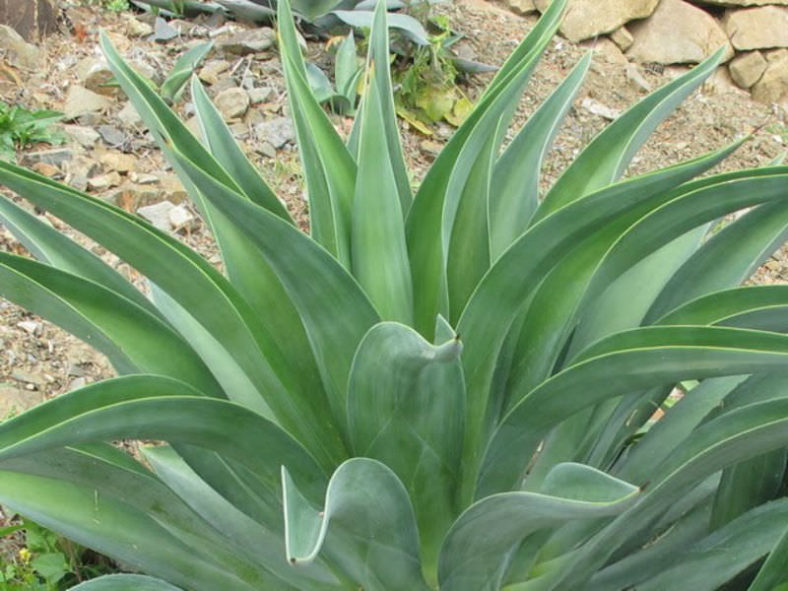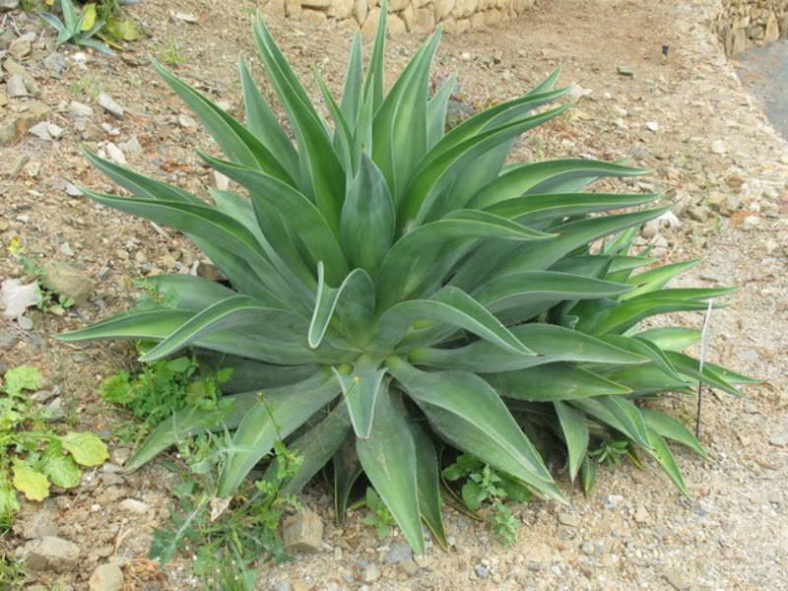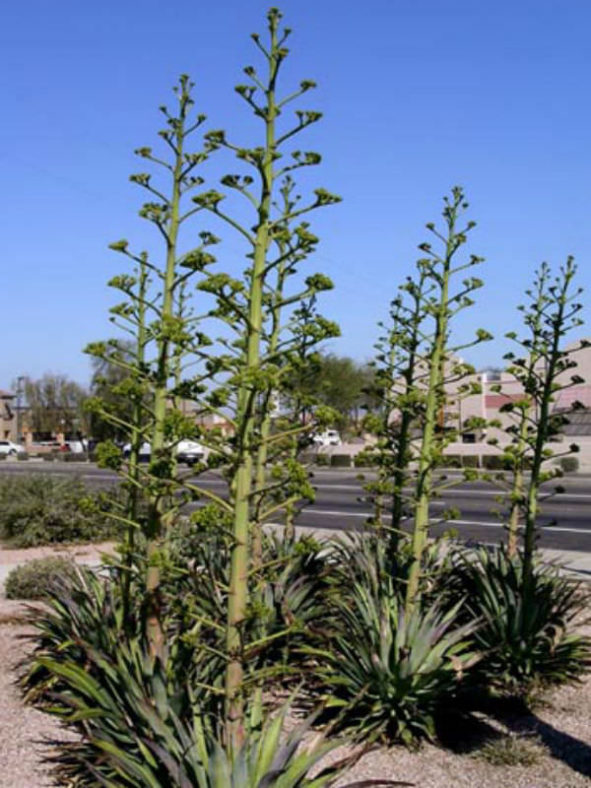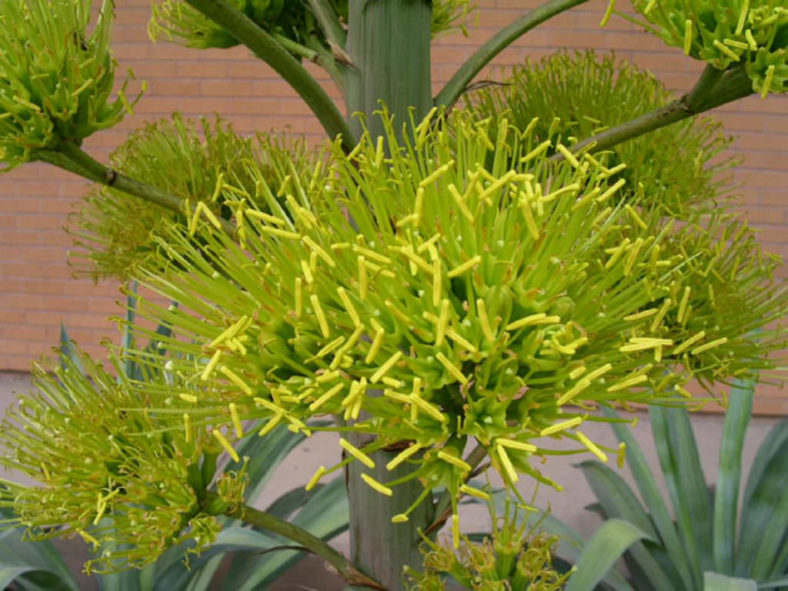Scientific Name
Agave desmetiana Jacobi
Common Name(s)
Dwarf Century Plant, Smooth Agave, Spineless Jade Agave
Synonym(s)
Agave ananassoides, Agave de-meesteriana, Agave demeesteriana, Agave desmettiana (misspelled), Agave miradorensis, Agave regeliana
Scientific Classification
Family: Asparagaceae
Subfamily: Agavoideae
Genus: Agave
Etymology
The specific epithet "desmetiana" (pronounced "de-smet-ee-AY-na"), often misspelled as desmettiana, honors Louis De Smet (1813-1887), a Belgian horticulturist and owner of a nursery specialized in succulent plants at Ledeberg, Ghent.
Origin
Agave desmetiana is believed to be native to southeastern Mexico (Oaxaca, Yucatan, and Veracruz).
Description
Agave desmetiana, also known as Agave demeesteriana, is a succulent plant that forms attractive rosettes of dark blue-green leaves with smooth margins and a sharp, reddish terminal spine. The rosettes can grow up to 5 feet (1.5 m) in diameter and produce offsets at the base, forming a colony over time. The leaves are fleshy, rigid, and usually recurved or reflexed, measuring up to 40 inches (1 m) long and 3.6 inches (9 cm) wide.
At some point between 8 and 10 years, a striking flower stalk with side branches is raised from the center of the rosette, reaching a height of up to 8 feet (2.5 m). The flowers are pale yellow, measuring up to 1.5 inches (3.8 cm) long, and appear in terminal clusters on side branches of the stalk. The rosette dies after flowering, but new rosettes formed by the offsets and bulbils on the flower stalk will remain. In the native habitat of the species, flowers typically bloom from spring to early summer.
Forms, Cultivars, and Hybrids

Hardiness
USDA hardiness zones 9a to 11b: from 20°F (-6.7°C) to 50°F (10°C).
How to Grow and Care
Agaves are not difficult plants to grow. They are slow-growing and dramatic and will even thrive on a bit of neglect. If you are the type of person who likes to fuss with houseplants and water a lot, Agave is probably not the plant for you. On the other hand, if you are the type of person who likes to set it and forget it, and you have a sunny window, Agave might be the way to go. Be aware that some large varieties will eventually outgrow your room (unless you have a large greenhouse), and Agave can be aggressive. They have irritating sap and sometimes very sharp thorns that can cause injuries to small children and even pets.
In general, Agaves do not need to be repotted every year. Most species commonly found in cultivation grow slowly and take a long time to outgrow their pot. It is also best to handle your plants as little as possible since they do not like to be disturbed. When you repot, refresh the spent soil with a new potting mix and ensure the plant is firmly anchored in its pot. However, be careful not to pot the Agave too deep, as that will encourage stem rot during the growing season.
Learn more at How to Grow and Care for Agave.
Links
- Back to genus Agave
- Succupedia: Browse succulents by Scientific Name, Common Name, Genus, Family, USDA Hardiness Zone, Origin, or cacti by Genus
Photo Gallery
Click on a photo to see a larger version.


